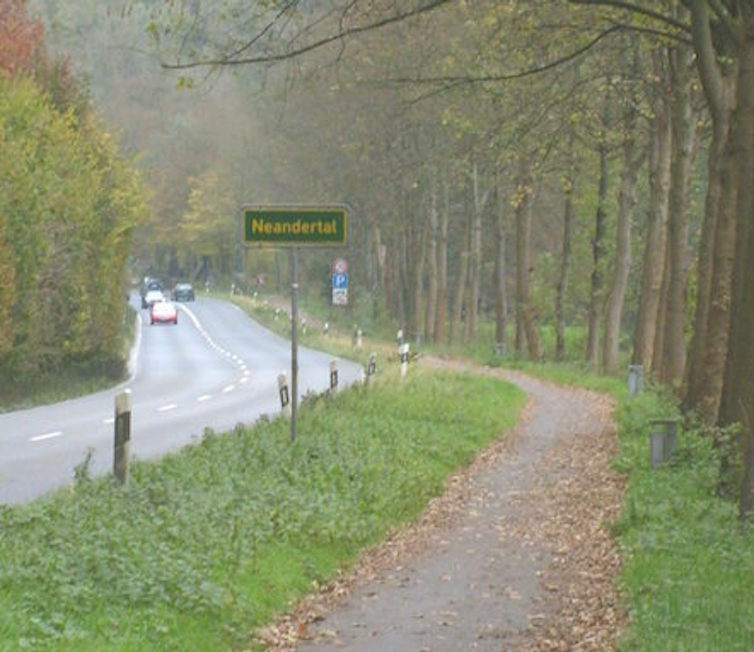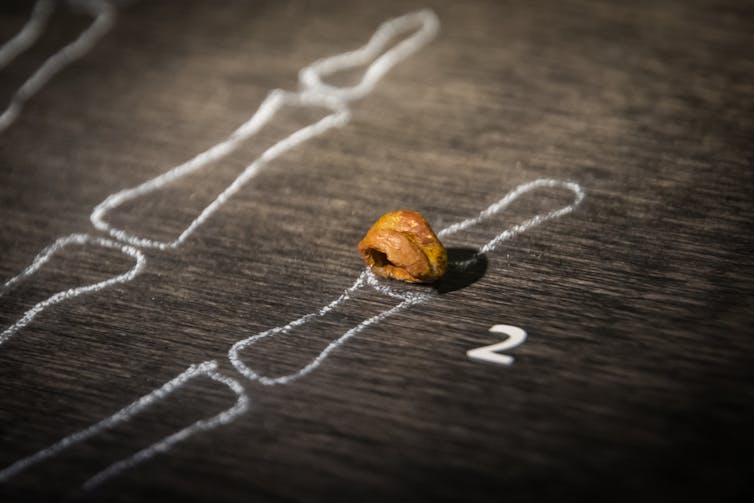On the occasion of the awarding of the Nobel Prize in Medicine to the Swedish pioneer of paleogenomics, Svante Pääbo, Monday, October 3, franceinfo is republishing this article by prehistorian Nicolas Teyssandier, originally published on The Conversation in 2018.
You may not know his name but I’m sure the results he achieved and made him world famous are not unknown to you. His latest great discovery: a bone fragment of a 13-year-old girl, discovered in a cave in the Altai mountains, which, according to her DNA, turns out to be a hybrid between a Denisovan father and a Neanderthal mother. , species cousins of Homo Sapiens now extinct.
Svante Pääbo is indeed the scientist who largely contributed to the decoding of the genome of the Neanderthals and made it possible to advance that they had mixed their genes with our Sapiens ancestors. We are here to bear witness to this: even today, 1 to 3% of the genome of Melanesian, European and Asian populations is the consequence of this Neanderthal ancestry.
Svante Pääbo has received a prestigious scientific award, the Körber European Science Prize, for the quality and impact of his work, which has revolutionized our understanding of the evolutionary history of current humans and that of certain human taxa of the past. The opportunity to decipher its main advances.
Back in the 1980s. Genetics has certainly progressed, but deciphering the genome of prehistoric humans is still only science fiction. American scientists are exploring the potential of genetic analyzes based on mitochondrial DNA. Transmitted from mothers to their children via their eggs, it is a tool for understanding the evolutionary history of humans. A geneticist, Rebecca Cann, collects DNA samples from women around the world. The results of his thesis will be published in the scientific journal Nature, the most famous. They point out that all humans on the planet are the descendants of a small East African population that lived 150 to 200,000 years ago. This thesis establishes the hypothesis of the “theoretical mother” of humanity, the one we will call the mitochondrial Eve. And, at the same time, that of a Out of Africaan African origin of all the populations of the planet.
The idea is not entirely new. Paleoanthropologists, who work not on genes, but on fossil bones discovered in an archaeological context, are already on this path. Discoveries of fossil humans are not new, and the first to be found were those of Neanderthals. In 1856, workers emptied a small cavity for the exploitation of a quarry and discovered bones and a skull cap. The valley (tal in German) bears the name of Neander and quickly, the discovery caused a sensation. A human very different from the populations of the time has just been discovered, even before the Cro-Magnon fossils, which will allow a few years later to certify the existence of humans identical to us (known as modern humans) during of the Paleolithic.

Neanderthal man was born. By a curious coincidence, this German toponymy translates as “new man”. Since then, paleontologists, who study fossil bones, then paleoanthropologists, specializing in those of ancient men, will study new discoveries. Morphological analyzes make it possible to distinguish different types, which will gradually be given the status of species. After Sapiens and Neanderthal, will come Heidelbergensis, Habilis or Ergaster and many others. But the bones, however informative they may be, do not always allow us to be sure of the biological status of their representatives. To qualify a species in the proper sense of the term, we must be sure that these representatives can reproduce among themselves and have viable offspring if we accept the biological definition of the latter.
The publication of the study attesting to a unique and African origin of all the populations of the globe was hotly debated among paleoanthropologists. At the end of the 1980s, many argued for a different theory, called multi-regional, where the ancestors of present-day Europeans would be Neanderthals, or even even older European hominins. This is schematically where the scientific situation is when a young Swedish doctoral student in biology, passionate about Egyptology, takes it into his head to try to extract DNA potentially still preserved in ancient materials. After unsuccessful attempts, the colored strands resulting from the removal of a 2400-year-old mummy appear. This is Svante Pääbo’s first publication in Nature on ancient DNA, we are in 1985.
Pääbo continues his quest and works on the fundamental problem of contamination. Indeed, if a few microscopic droplets of current DNA penetrate an old DNA that is necessarily degraded, it overwhelms it. He also intends to test the possibility that even older DNA can be found and for this, it is necessary to know if the bones contain it. Because there is no Paleolithic mummy! The results will prove positive and the DNA sequences of mammoths 10 to 50,000 years old are published in 1994.
Everything is now in place to attempt the incredible challenge of extracting DNA from fossil humans, extinct for tens of thousands of years. The research will last several years and mobilize a whole group of researchers in this pioneering undertaking. In 1996, a phone call in the middle of the night wakes up Pääbo; one of his collaborators has just identified a completely original DNA sequence at the expense of a bone sample taken from a small piece of humerus from the human fossil discovered in 1856 at Neander. The Neanderthal holotype has just been revealed and the first mitochondrial DNA fragment of an extinct form of human is identified. The study, published in the journal Cell in 1997, compares this sequence to that reconstructed from 2,051 current humans. His result: Neanderthals would be a different human species from ours, which would have diverged from our lineage at least 500,000 years ago. So there would be nothing Neanderthal in us. End of the first act.
This same year 1997 constitutes a turning point for the researcher because, in addition to the publication of this fantastic result, he is offered the possibility of creating a research center in paleogenetics within the Max Planck Institute which is born in Leipzig. The human and financial resources involved will be considerable. The group has a clean room of which it has thought out the smallest details to avoid any contamination of the samples taken by current DNA.
The results follow one another, the collaborations multiply and in 2010, Pääbo announces a spectacular result, the second act of the performance: the almost complete DNA sequence of Neanderthal is published in the journal Science. It is composite, since reconstituted from the bones of three individuals a little over 40,000 years old exhumed on the site of Vindija, in Croatia. More than 4 billion nucleotides, organic molecule which constitutes the basis of DNA, make up this sequence! Its confrontation with the DNA of modern humans gives us a glimpse of what certain paleoanthropologists had long sensed based on anatomical morphology: 1 to 3% of Neanderthal DNA is still present today in the genome to a large extent of humanity, the Eurasian populations in particular. On the other hand, this “archaic” fraction of the genome of Homo sapiens is not found in the populations of Africa where they originated.
Indeed, the interbreeding between Sapiens and Neanderthals would have taken place after the exit from Africa of pioneer groups and in this way, the contribution did not affect the African populations. These data will be confirmed at the very beginning of 2014 with the publication of the complete DNA of a single individual, a Neanderthal woman whose bones were discovered in a cave in Russian Altai. It is from this same cavity, Denisova, that comes the small phalanx of a human finger that Pääbo’s team will analyze, thinking again of finding a Neanderthal sequence. It was not the immense surprise when the results began to fall: neither Sapiens, nor Neanderthal, the team had just identified a new human species whose bones had never been described: the man of Denisova. For the first time, the discovery of a new species was born from the decoding of fossil DNA.

![]()
We cannot detail this fantastic scientific and human epic in a few lines. For the prehistorian that I am, it must be recognized that we are living in a formidable era where data that was hardly believable a few decades ago is emerging and is profoundly modifying our knowledge of human settlements over the long term. We must obviously remain cautious as technological advances always accelerate this race for knowledge and never forget that everything sometimes changes very quickly. The prodigious scientific adventure of Svante Pääbo and his teams is for all of us the illustration that in science, dreams are necessary. Doubt too and perpetual questioning, illustrated here by the first results strictly differentiating Sapiens and Neanderthals before continuing the analyzes and realizing that they had mixed their genes… Dream, doubt and critical thinking, three important virtues for the scientists.
Nicolas Teyssandier, CNRS Researcher, Prehistorian, National Center for Scientific Research (CNRS)
The original version of this article was published on The Conversation.
